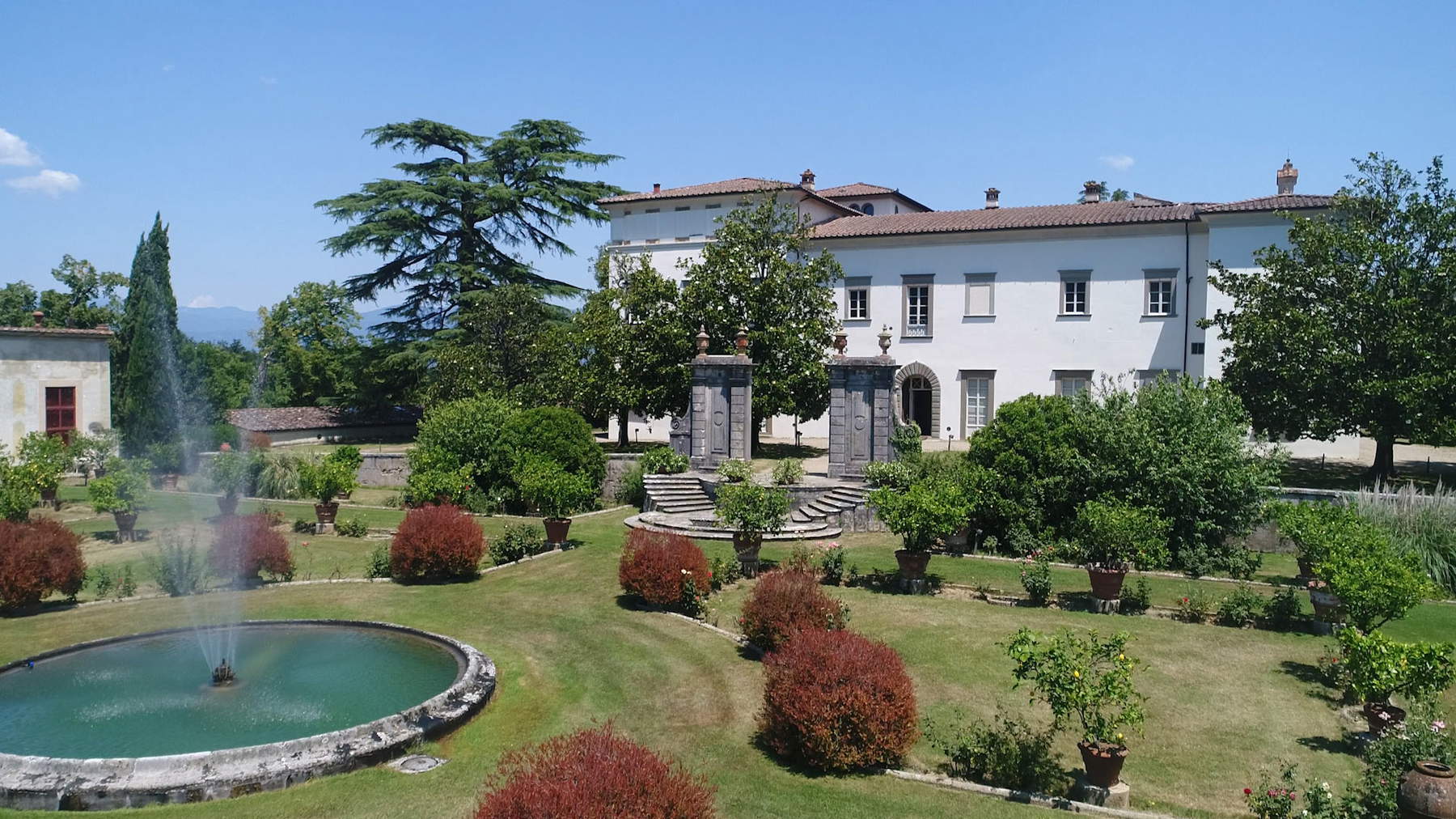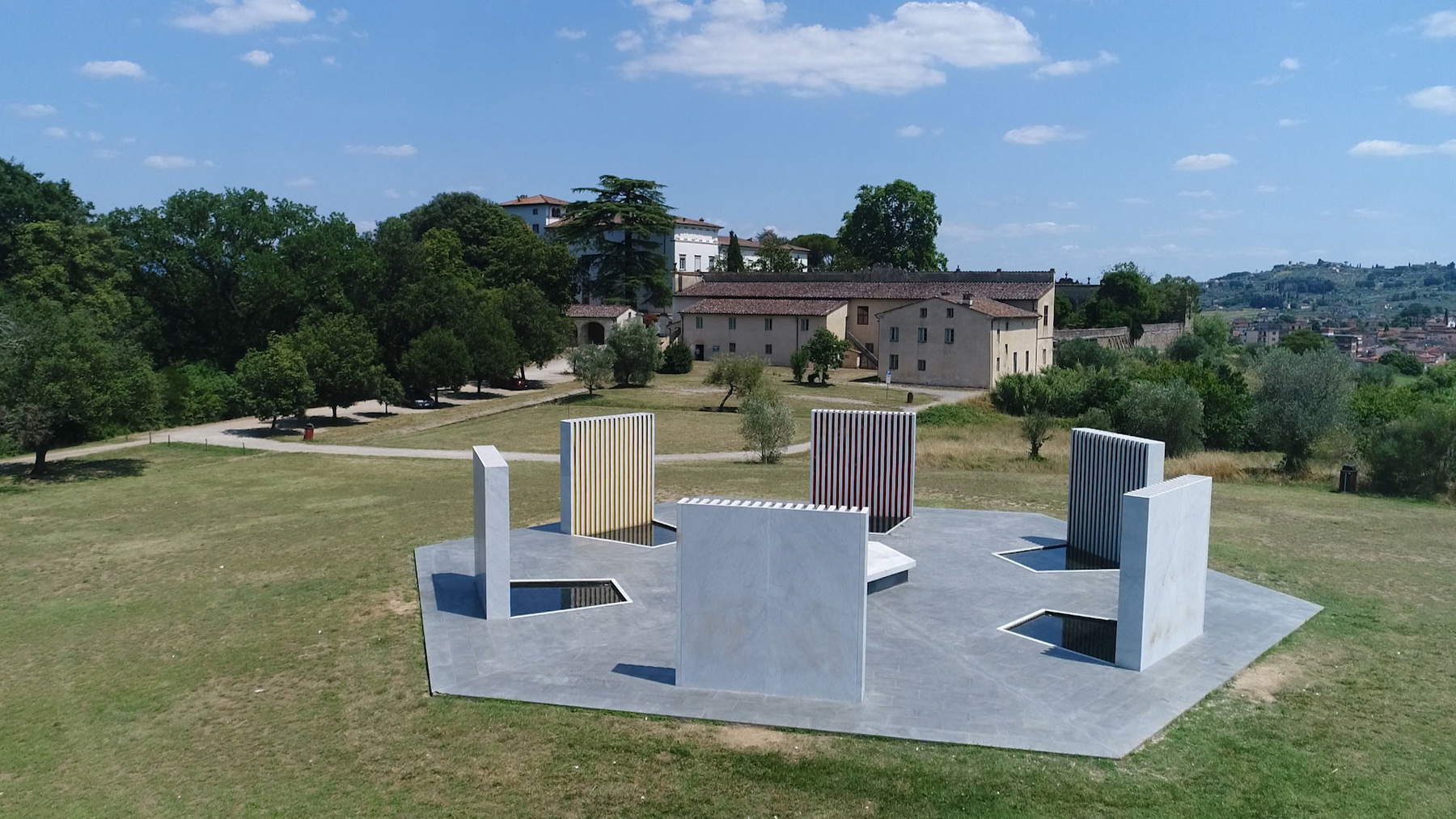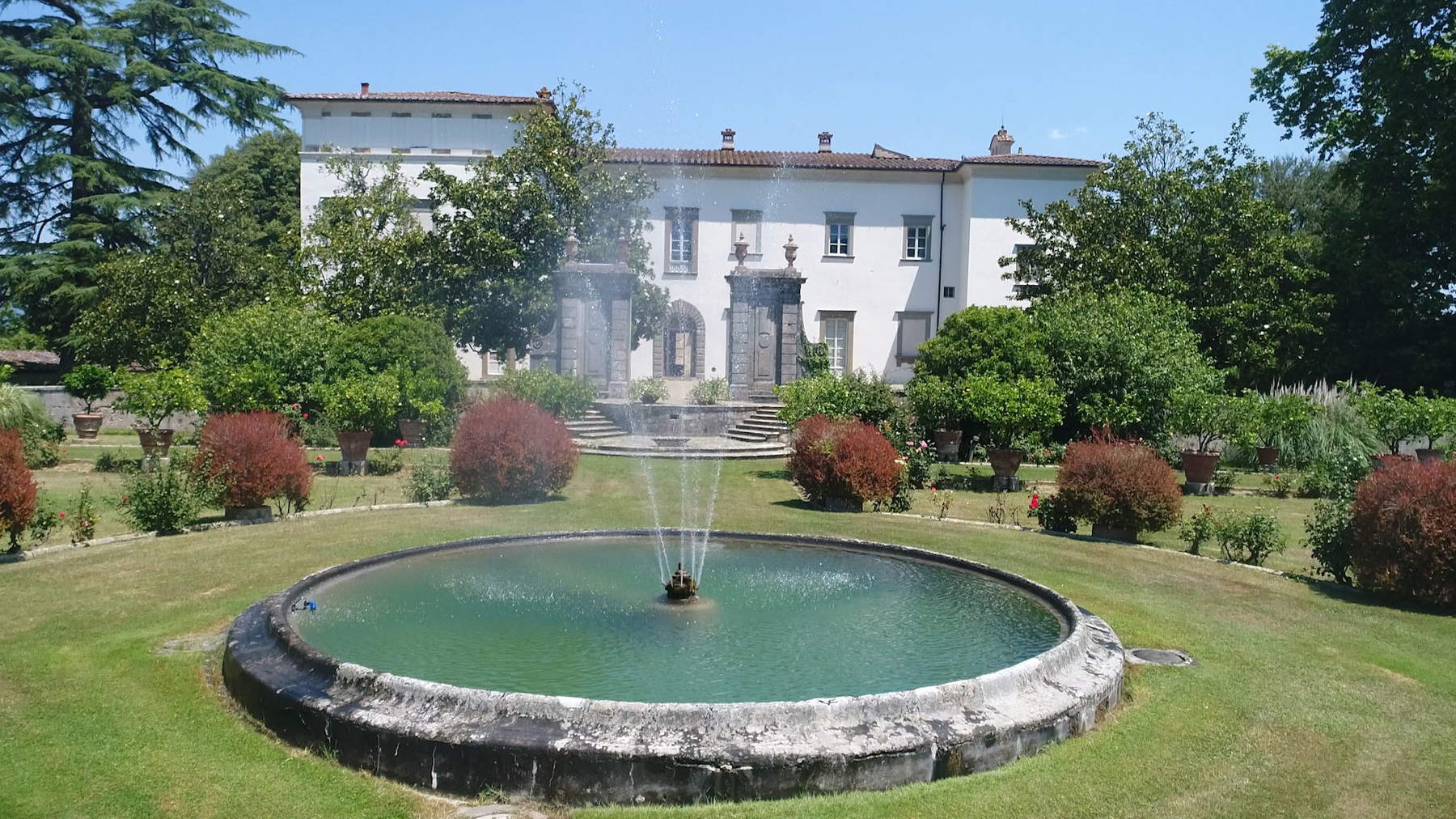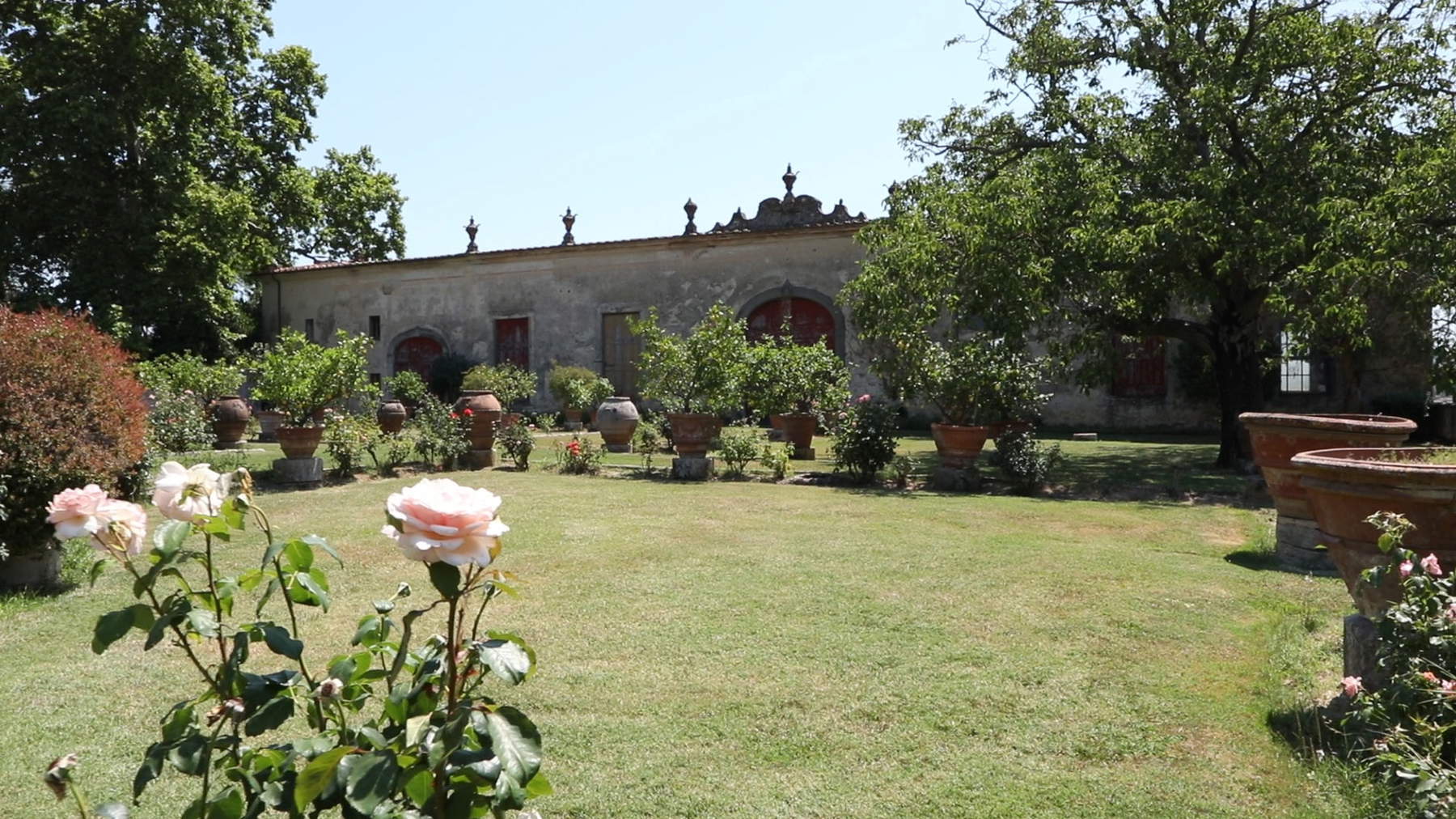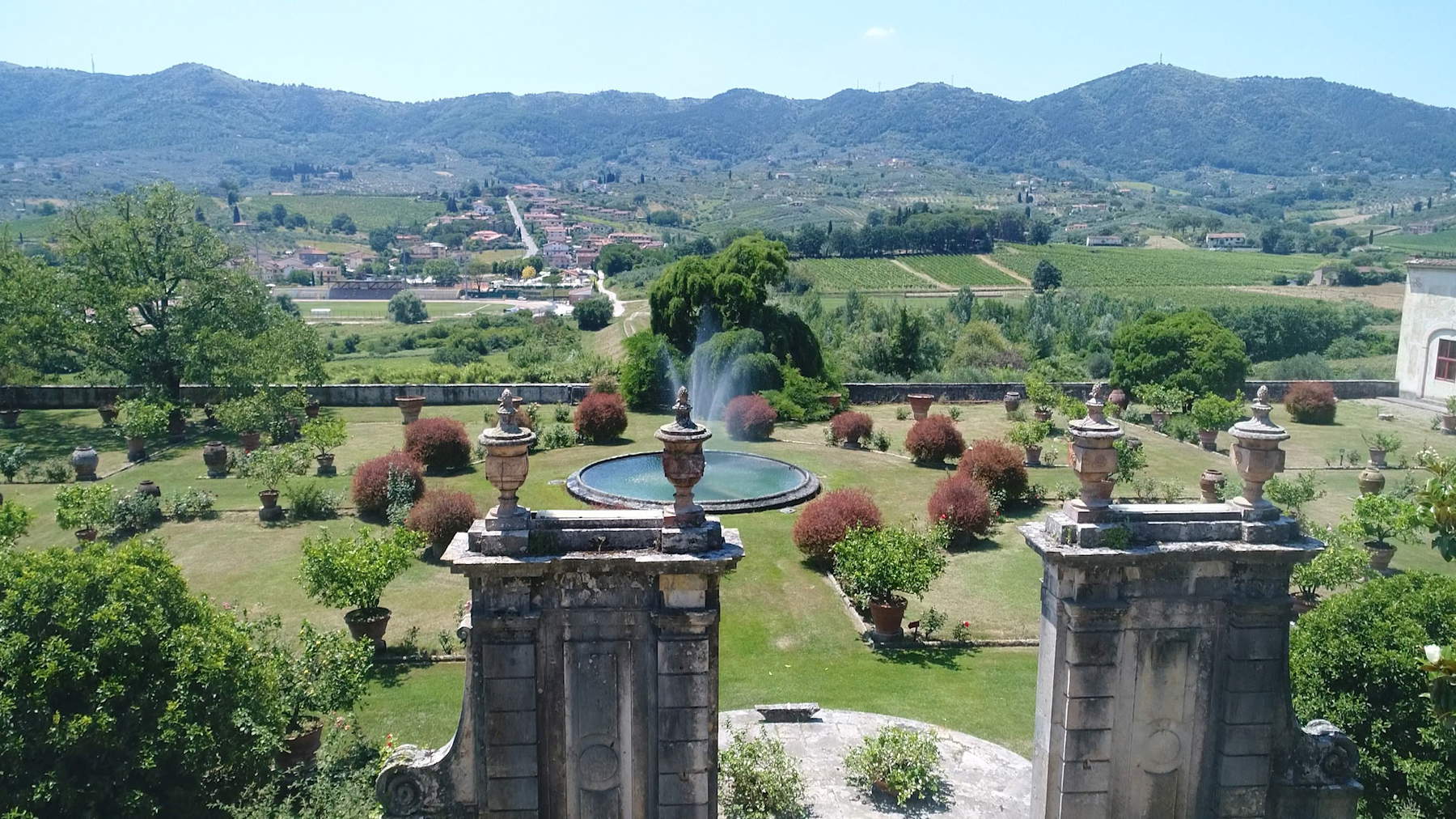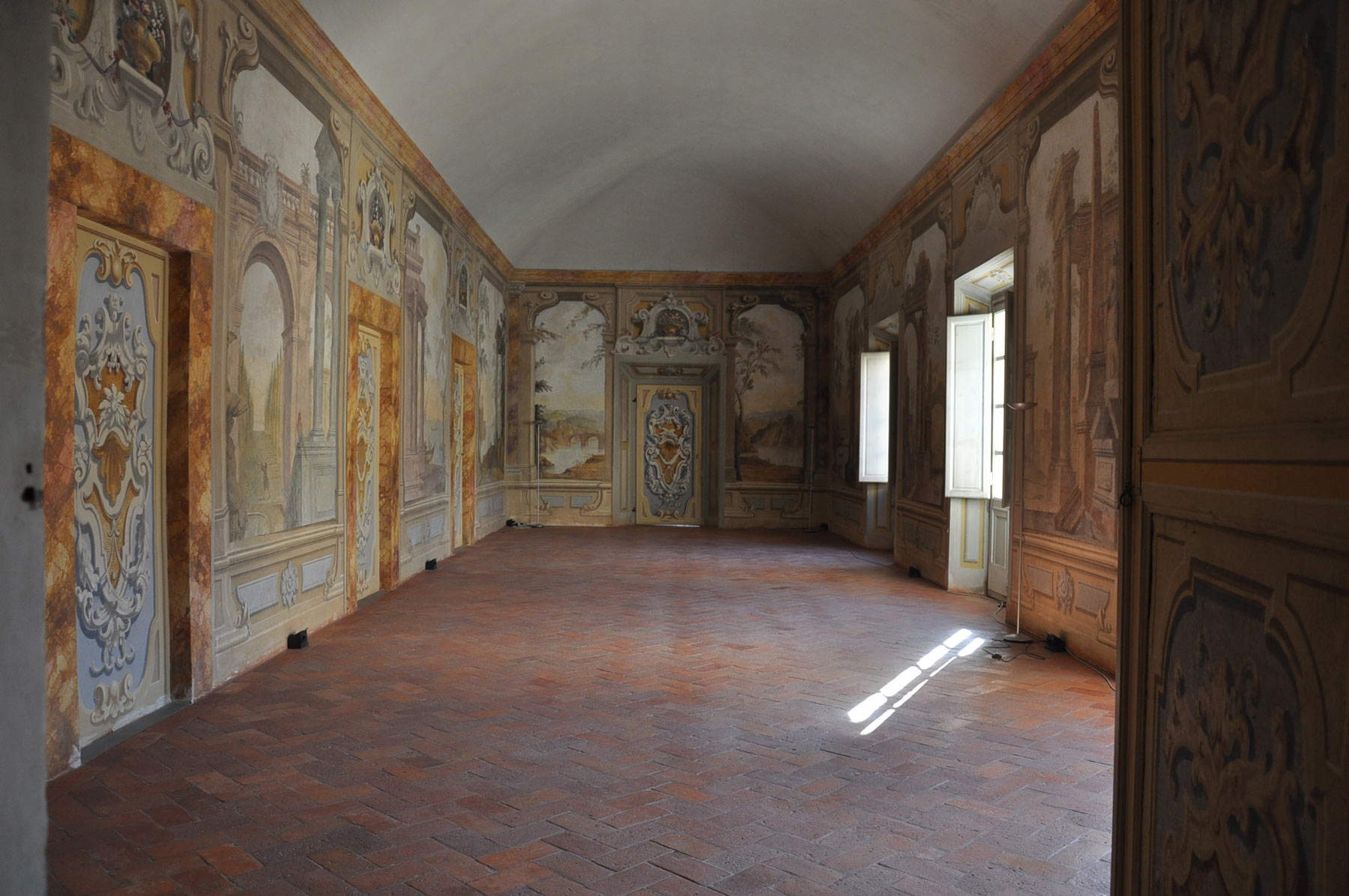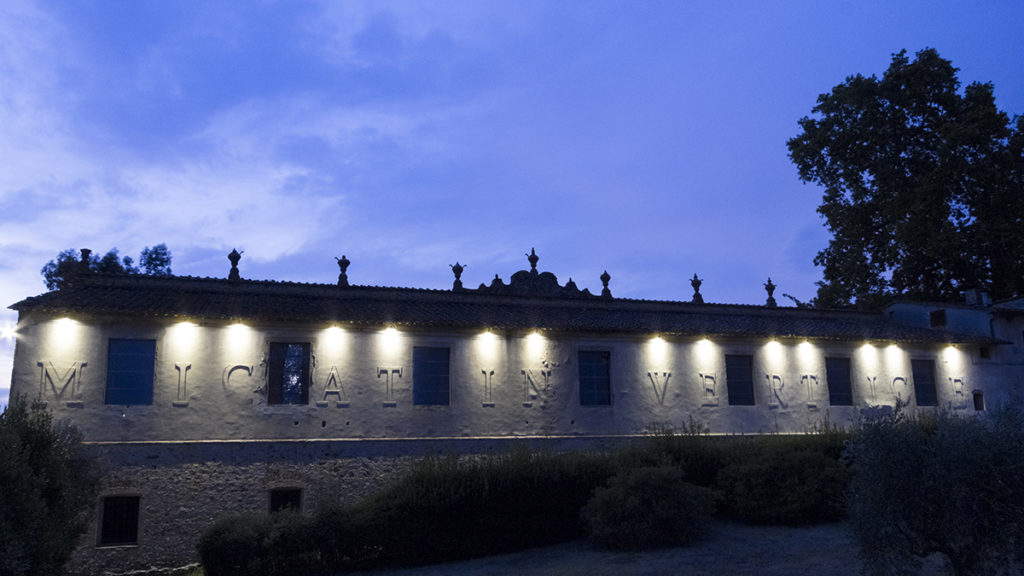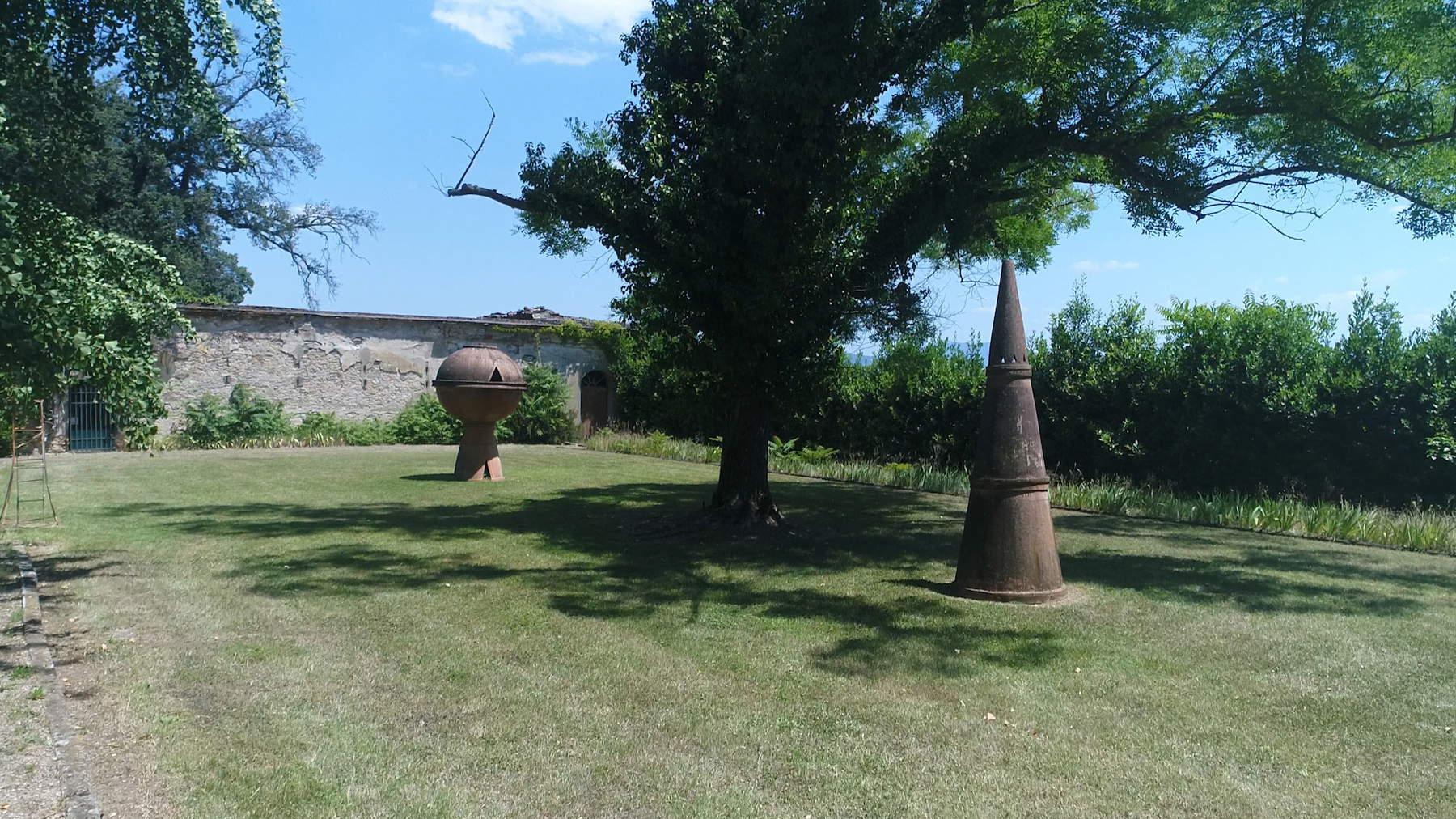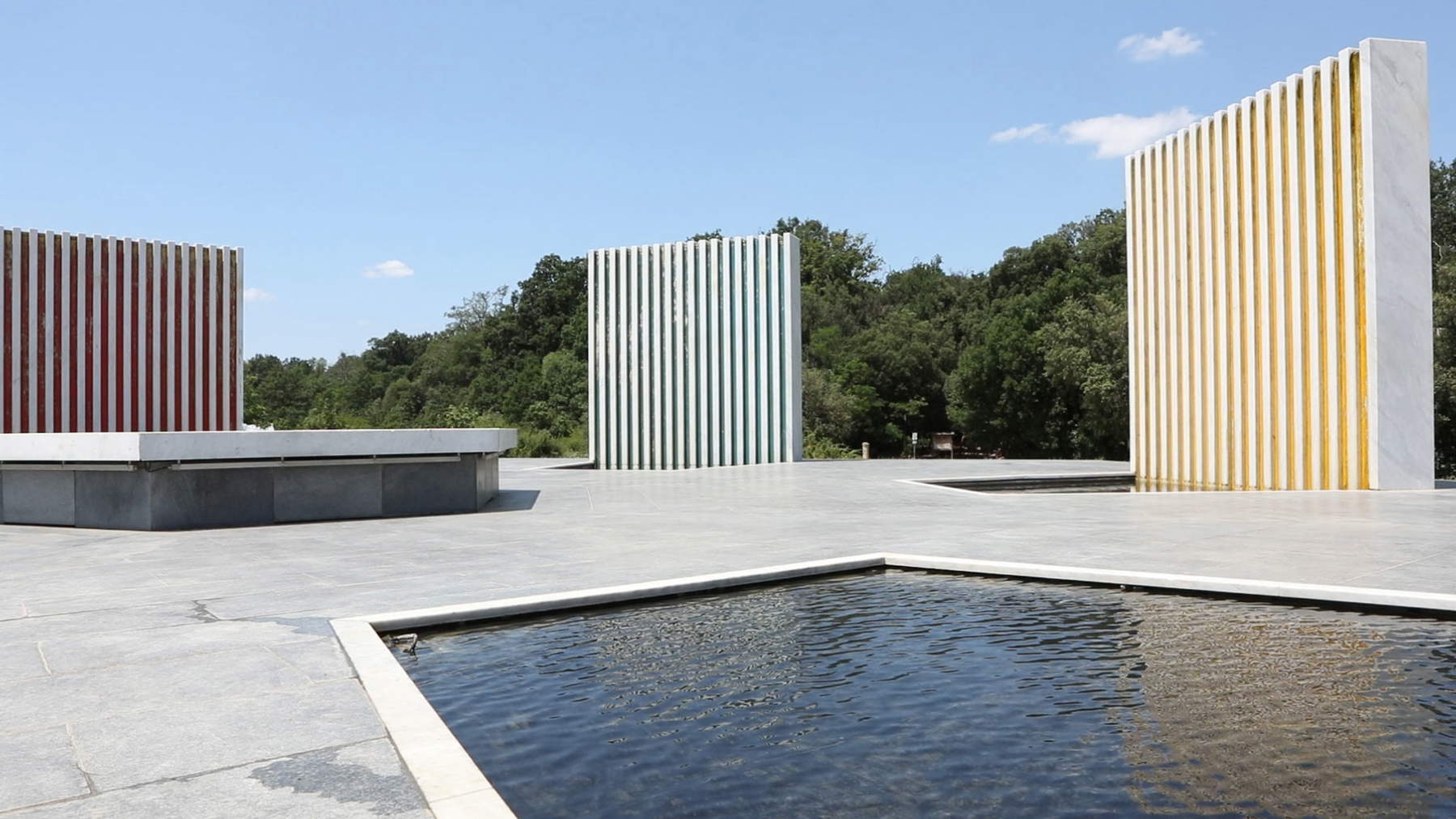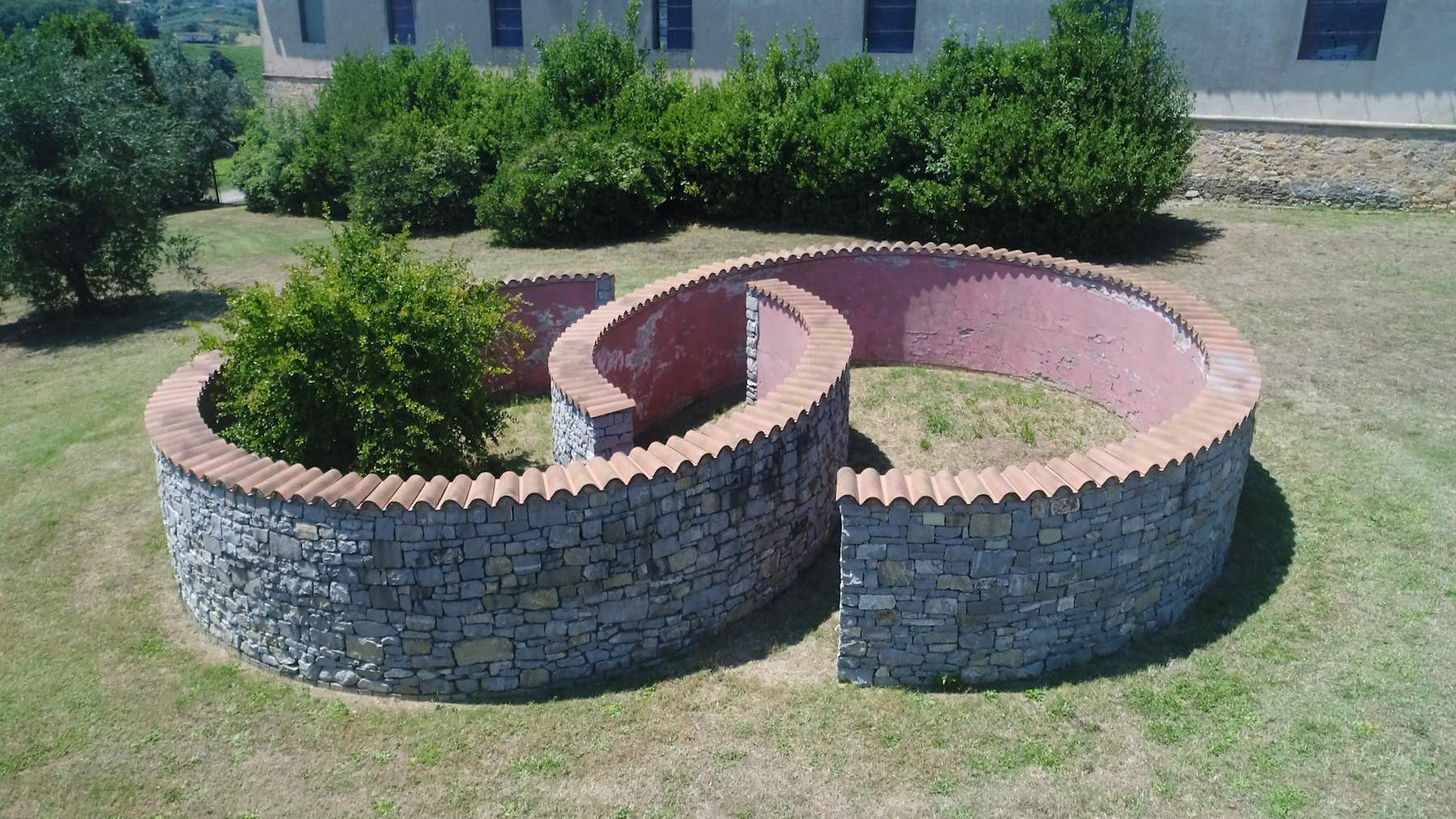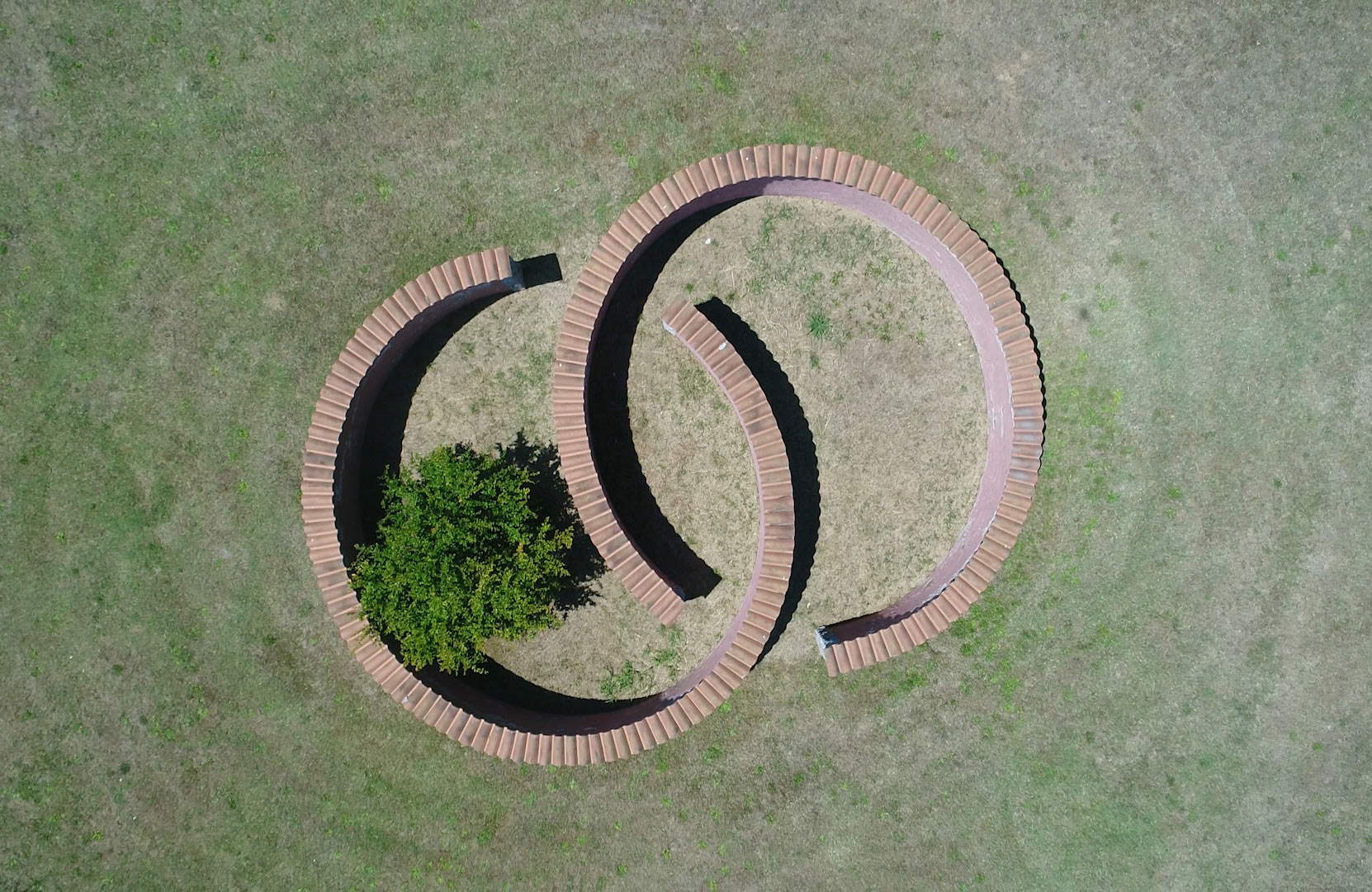by Federico Giannini, Ilaria Baratta , published on 08/07/2020
Categories: Works and artists
/ Disclaimer
In Quarrata (Pistoia), the Medici Villa della Magia has been transformed in recent years into a contemporary art garden called "Genius Loci - The Spirit of Place": a place where ancient and contemporary meet in a close dialogue between man and landscape.
The recent history of Villa La Magia, the grand Medici villa in Quarrata, to be read strictly with the accent on the first “a,” began in 2000: “màgia,” meaning “great,” from the Latin maius. That year, the ancient mansion became the property of the municipality, adding a chapter to its long history that began in 1335, when the illustrious Florentine Panciatichi family took possession of the land on which the villa stands today. It was a place of great strategic importance, since Quarrata lies on the communication routes between Pistoia and Florence, and so the Panciatichi family had a first tower-house built. The family remained owners of the building and its appurtenances until 1583, when they were forced to sell everything due to some financial problems.The Magia was thus purchased by Grand Duke Francesco I de’ Medici, and from that year it became part of the Medici villa system. Francesco I commissioned the court architect, Bernardo Buontalenti, to rearrange what had already become a residence: it was he who created the artificial lake that still exists today, and which we already see in period paintings.
The Medici period, however, lasted only about sixty years, because already in 1645 Ferdinand II ceded the villa to Pandolfo di Ottavio Attavanti, a member of a historical family of Castelfiorentino, who subjected the Magia to major renovation works that made it acquire the appearance with which it still presents itself to the eyes of visitors today: it was with the Attavanti family that the monumental staircase leading to the sumptuous rooms of the piano nobile was built; again, the Attavanti family had the external chapel built, in neo-Gothic style, dedicated to St. Verdiana (patron saint of Castelfiorentino) and took care of the rearrangement of the internal courtyard. Under the last of the Attavanti family, Pandolfo di Amerigo, the magnificent galleria nova located on the villa’s main floor was also opened, and the rooms were enriched with frescoes by Giovanni Domenico Ferretti (Florence, 1692 - 1768), one of the greatest artists of the Florentine 18th century. Pandolfo Amerigo died without heirs and, in 1752, the villa passed by inheritance to the Ricasoli family and from them, in 1766, to Giulio Giuseppe Amati: the latter’s family held ownership of the villa for two and a half centuries, until 2000, when the Amati Cellesi sold the Magia to the City of Quarrata.
The Magia was initially intended as a venue for events, but soon the municipality thought of radically changing its destiny: the idea was to make it the site of one of the most interesting environmental art projects in Tuscany, a park capable of hosting works of art capable of dialoguing with the surrounding environment and enhancing the strength and characteristics of this land. Thus, back in 2000, some restoration work began with the aim of making sure that the villa would arrive ... on time and in order to its appointment with great contemporary art. The inauguration was held in 2005, and the name Genius Loci - The Spirit of the Place was chosen for the park: the municipal administration, led by then-Mayor Sabrina Sergio Gori, who strongly believed in the project, intended to make clear from the title the reasons why this particular outdoor art collection was born, that is, to translate the genius loci of this area of Tuscany into works of contemporary art. Since time immemorial, in Tuscany, man has lived a profound and fruitful symbiotic exchange with the landscape: and this relationship, over the centuries, has guided urban interventions, the anthropization that has adapted to the conformation of places (and not the other way around), the shaping of the landscape itself, and continues to do so today, in full respect of the environment. It is precisely by virtue of this relationship that today we know Tuscany as it is, which is why it has entered our collective imagination with the sceneries we all have in mind. What La Magia proposes is, to use the project’s own words, a “sensory journey” within the park, where “the artists’ works merge into the landscape, integrate into the spirit of the place and history until they become an integral and intrinsic part of it, a matter of reflection for the visitor and a perennial evocation of sensations aimed at overcoming the boundaries beyond landscape and matter.”
 |
| Villa La Magia (Quarrata). Ph. Credit Alessandro Pasquali - Danae Project |
 |
| Villa La Magia (Quarrata). Ph. Credit Alessandro Pasquali - Danae Project |
 |
| Villa La Magia (Quarrata). Ph. Credit Alessandro Pasquali - Danae Project |
 |
| Villa La Magia (Quarrata). Ph. Credit Alessandro Pasquali - Danae Project |
 |
| Villa La Magia (Quarrata). Ph. Credit Alessandro Pasquali - Danae Project |
 |
| Villa La Magia (Quarrata). Ph. Credit Alessandro Pasquali - Danae Project |
 |
| Villa La Magia (Quarrata). Ph. Credit Alessandro Pasquali - Danae Project |
 |
| The nova gallery |
The first project accepted by La Magia dates back to the same year 2005: the light and shadow installation Micat in vertice by Fabrizio Corneli (Florence, 1958), an artist who has always been accustomed to creating works of art with light. Corneli’s intervention, curated by Katalin Mollek Burmeister, acted on the rear façade of the Limonaia di Levante, and the title chosen by the artist for his installation (“shines on high”) already communicates to the relative the sense of the work, a sort of luminous caress from above to a space created to enhance the vital function of light, thanks to which lemon trees can grow healthy and bear their juicy fruit. This sense of “genesis” made possible by light is at the heart of one of the two “souls” of Micat in vertice, since the work is composed of a double intervention: the first is the lights that, placed on the facade of the lemon house, at nightfall make some metal rods that make up the title of the work itself glow. The second, on the other hand, is located inside the lemon house: here, at night, thirteen works made only of light and shadow turn on and off through a system of sensors intended to create a world of figures that are generated in the most unusual and unexpected ways, transporting the visitor to a kind of dream garden.
The path was thus mapped out, and the following year Magic was enriched by the works of Anne Houllevigue (Marseille, 1942) and Patrick Poirier (Nantes, 1942), French sculptors of great renown who work in pairs (for such they are in life as well) and are known simply as Anne and Patrick Poirier: among the main strands of their research has always been that of memory, and it is to this theme that the installation The Memory Factory is dedicated, a work made of pietra serena, or the most typical material of Tuscany, the land where the transalpine couple has been working for some time. Their installation is located near the artificial lake of Magic: a small building, a sort of cube (the “factory”) houses a table where there is a graphic reproducing the shape of a stylized brain, divided into sectors that indicate the relationships between the different areas of the intellect (each word that identifies them presents a different color). A work that re-proposes to the visitor the motif of Poirier’s “brain-house” (a place that represents a meeting point between the collective memory, the house, and the memories of the individual, the brain), also highlighted by the inscriptions that accompany the public inside the structure(Anima m undi and Memoria mundi, again the encounter between the individual and the collective dimension of memory). The Poiriers wanted to focus on the history of the villa, a site with centuries-old events, the result of the wills of the individuals who have lived and inhabited it, but also of the tastes and inclinations of the eras it has passed through.
The Memory Factory is not the only work by Anne and Patrick Poirier that can be seen at the Magic. Indeed, in what was once the tennis lawn are the two large Bruciaprofumi, made in 1997 but placed in the lawn in 2006: these are two large terracotta works, which came to life in a factory in Impruneta, the village near Florence renowned for its terracotta production, and placed here to enhance the visitor’s sensory experience. In fact, the three-meter-high bruciaprofumi give off the essences of the herbs and plants found in the villa’s garden, with the intention of guiding the visitor along the history of Tuscany not only through material references (since since since the earliest times the production of terracotta has characterized many towns and villages in Tuscany), but also with impalpable, olfactory ones: also for this reason, the bruciaprofumi find their location next to the lemon house. This is in fact the place where the scents of nature are smelled in their purity, while in the tennis lawn they are the result of the happy interaction between man and nature.
 |
| Fabrizio Corneli, Micat in light (2005; light and shadow installation on the rear facade of the Limonaia di Levante) |
 |
| The tennis lawn. Ph. Credit Alessandro Pasquali - Danae Project |
 |
| Anne and Patrick Poirier, Bruciaprofumi (2006; cotto dellImpruneta, height 300 cm). Ph. Credit Alessandro Pasquali - Danae Project |
 |
| Anne and Patrick Poirier, Bruciaprofumi (2006; cotto dellImpruneta, height 300 cm). Ph. Credit Alessandro Pasquali - Danae Project |
Retracing one’s steps, one crosses an intricate hedge of boxwood, an austere and robust plant, to arrive in front of the Inverted Garden by Hidetoshi Nagasawa (Tomei, 1940 - Ponderano, 2018), another artist who has always had a special relationship with Tuscany, having left several of his works here. His structure is located just below Fabrizio Corneli’s work: it is a work composed of two large circles made of Alberese stone, a typical material of the northern areas of Tuscany, which intersect but do not close, thus allowing the visitor to enter them. The union of the two circles thus creates three open spaces: those that the two circles form when one enters them, and the one that is instead in the center, at the point of union between the two forms. A surprising path that, as is typical of Nagasawa’s poetics, lies somewhere between closed and open (which is why it is “inverted”: because when one enters it, one does not have the sensation of being in a garden, but neither does one feel that one is in an enclosed space... and then where has one ever seen a masonry garden?), and which is purposely designed not for contemplation, but for the visitor to open himself up to interaction with the work of art. Not only that: in one of the open spaces, the visitor finds a pomegranate plant, a further symbol of the encounter between man and nature and of the way human beings act on the landscape by modifying it, but also a symbol of the life that is born and develops within the garden (otherwise, everything is left to the action of the elements: spontaneous vegetation, seeds carried by the wind).
Reaching the villa again and entering the courtyard, one can admire here another installation, the work of Maurizio Nannucci (Florence, 1939), the great neon artist (he was among the first in the world to experiment with it as a form of writing, in an art that manages to make a marked aesthetic dimension, distinctly conceptual modes of expression and social instances coexist at the same time): his intervention, Anthology two, dates from 2009 and consists of four phrases, obviously in neon, hung on the four interior facades of the villa that enclose the courtyard. In red it reads Wherever color undermines aesthetic pleasure (“Wherever color undermines aesthetic pleasure”), in blue Whenever art displaces common perspectives (“Whenever art modifies common perceptions”), in yellow Wherever light releases time from darkness (“Wherever light releases time from darkness”) and in green Whenever sound creates a total visual field (" Whenever sound creates a total visual field"). The texts imagined by Nannucci offer the basis for a reflection on the interaction between color, language and sound, which aims at the total sensory involvement of the visitor (also because originally the four neons were meant to be accompanied by a sound installation, Resonance sound / Small movements, also installed at Magia in 2009 by Nannucci). The phrases that Nannucci inserts into the space, wrote curator Katalin Mollek Burmeister (who also supervised the Poirier and Nagasawa interventions), “represent an interruption with the usual view of the place, and provide a new system of meanings on which to reflect and develop. In this process the different temporal perspectives of past, present and future touch each other, without provoking closures: indeed, it is exactly the opposite sense of the artist’s work. The contact between the viewer and the work is an exchange that must leave ample room for the conceptual/emotional contribution of the viewer and responds to the same need for openness the indeterminacy of sentences.”
There is still room for one more work, the latest to be added to the collection: it is the three-color Fountain Walls for a Hexagon, a 2011 work by Daniel Buren (Boulogne-Billancourt, 1938). It is a monumental fountain created outside the Medici villa, above a lawn overlooking the Montalbano hills, the ridge that separates the Pistoia plain from the Lower Valdarno. The installation, curated by David Palterer, is a large hexagon that at its center houses a fountain, also hexagonal, made of Carrara marble. On each of the sides of the hexagon rise tall fluted panels (waterfalls where the fluid element flows through colored grooves) that are mirrored on water-filled trapezoids with their colors, the primary colors: blue, yellow, red. Meanwhile, the work was created to frame the landscape, as if it were a large window that, through its alternations of solids and voids, punctuates it with its slow and harmonious rhythm. Moreover, it is a work that insists on the element ofwater, which has been of enormous importance for these lands: it is also meant to be a reference to the hydraulic interests of Leonardo da Vinci, who was born on the opposite side of Montalbano (Vinci, as the crow flies, is not even a dozen kilometers from Quarrata). A modern nymphaeum, that of Daniel Buren, which moreover lights up at night as if it were a beacon guiding toward Magic.
 |
| Daniel Buren, Three-color fountain walls for a hexagon (2005-2011). Ph. Credit Alessandro Pasquali - Danae Project |
 |
| Daniel Buren, Three-color f ountain walls for a hexagon (2005-2011). Ph. Credit Alessandro Pasquali - Danae Project |
 |
| Daniel Buren, Three-color fountain walls for a hexagon (2005-2011). Ph. Credit Alessandro Pasquali - Danae Project |
 |
| Daniel Buren, Three-color fountain walls for a hexagon (2005-2011). Ph. Credit Alessandro Pasquali - Danae Project |
 |
| Daniel Buren, Three-color fountain walls for a hexagon (2005-2011). Ph. Credit Alessandro Pasquali - Danae Project |
 |
| Hidetoshi Nagasawa, Inverted garden (2008). Ph. Credit Alessandro Pasquali - Danae Project |
 |
| Hidetoshi Nagasawa, Giardino rovesciato (2008). Ph. Credit Alessandro Pasquali - Danae Project |
Today, the Magic continues to be a venue for events, concerts and contemporary art exhibitions, which are based in the villa’s historic rooms. Guided tours, both inside and in the park, are organized periodically, and the City of Quarrata also provides special educational offerings for schools. Just as the Medici were great patrons, attentive to all the modes of expression of their time, so today Quarrata has chosen the Medici villa as a venue for an equally attentive look at the art forms of the present. “The viewer,” Sabrina Sergio Gori wrote several years ago, “is welcomed into the heart of Tuscany, among the greenery and architectural wisdom that have transformed LaMagia into a stately home, respectful of the balance between things and the universe, between man and nature. The ambitious choice to enhance and enrich our Villa Medicea artistic drawings of great value is linked on the one hand to the allorg-glio of our roots and on the other to the desire to share a precious asset such as this.” An asset whose history can be read in the figures of Ferretti’s frescoes, inside the chapel of Santa Verdiana, from every single piece of its walls, walking through the romantic garden or its lemon groves, while the works of today’s great artists that punctuate its spaces surprise the relative at every corner, unexpected and solemn, and help him to understand the reasons for the balance that, in Tuscany, man has established with nature and the landscape.
Warning: the translation into English of the original Italian article was created using automatic tools.
We undertake to review all articles, but we do not guarantee the total absence of inaccuracies in the translation due to the program. You can
find the original by clicking on the ITA button. If you find any mistake,please contact us.
